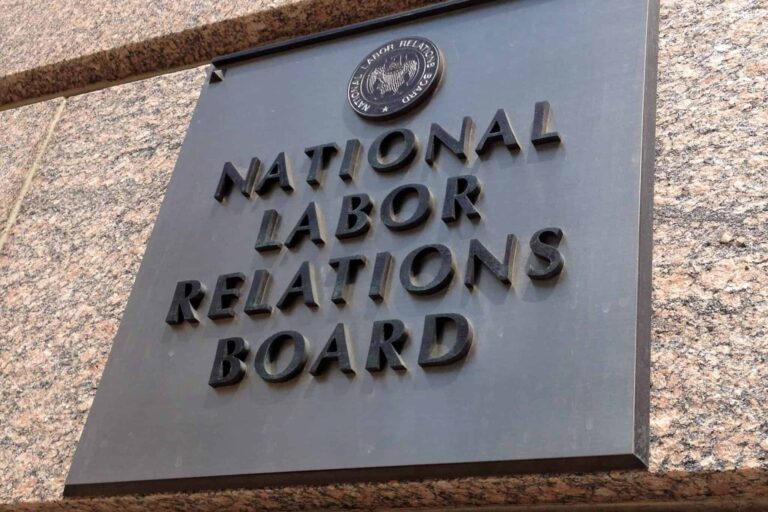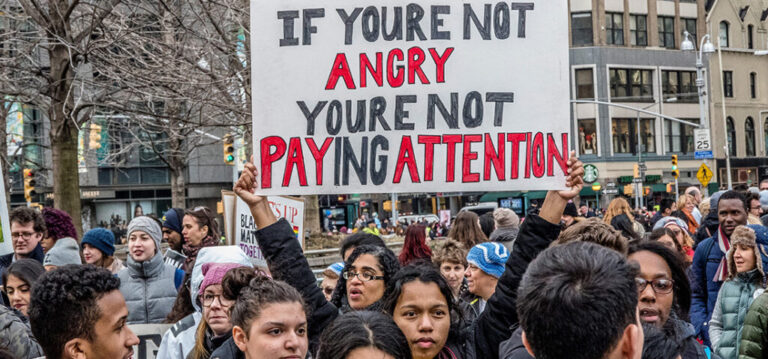Ana Avendaño is the Vice President of Labor Engagement for United Way.
Linda Seabrook is General Counsel of Futures Without Violence.
As in other sectors, reports of sexual harassment in the labor movement–in many instances long-known, but carefully repressed–have surfaced in recent weeks. Rather than shirking broad responsibility, this moment presents an opportunity for unions to look beyond issues of legal liabilities and address deep cultural changes that are so badly needed
Unions were established to promote dignity, equality, and respect for all workers. As such, unions have an important role to play in creating safer, and more supportive and accountable workplaces. Unions are in a unique position: they have the power to influence how employers address harassment in workplaces where they have collective bargaining relationships or where they are organizing.
The following are practices that unions could adopt right now to address sexual harassment in America’s workplaces:
1) Recognize that sexual harassment is a workers’ rights issue. Therefore, it’s a union issue. Some unions are powerfully tackling sexual harassment of their members through public awareness campaigns, through their power at the bargaining table, or by developing collaborations with anti-violence and worker safety advocates to create best practices and policies. As one example, the Ya Basta! Coalition,* a group of women worker leaders and safety and anti-violence advocates are collaborating alongside a local union to address sexual harassment and violence in the janitorial industry in California and build women worker leadership to create a culture of prevention, equity, and accountability in the industry.
- Sexual harassment weakens unions. When unions don’t take harassment seriously, they send a message to women that the union is not the place for them. This discourages women from both joining a union, and becoming active within the union.
2) Make sure that the union’s constitution and collectively bargained agreements contain guarantees against sexual harassment and retaliation. Including such provisions in collective bargaining agreements as a matter of course sends a clear message to employees that the union is committed to fighting sexual harassment as a fundamental matter of union policy.
- Bargain for mandatory sexual harassment prevention and response training within any agreement.
3) Address member-on-member harassment. Unions are often reticent to investigate claims of harassment by one member against another, especially when those claims involve sexual harassment. This is particularly true in male-dominated workplaces. Unions meet their legal obligations to both the accused and the target of harassment by conducting an investigation fairly, in good faith, and without discrimination.
- When an investigation supports a claim of harassment, the union should support the interests of the victim fully and adopt practices that make clear to members that it will not use its power to enable harassers. For example, the union could let employees know that the union isn’t going to arbitrate claims of unjust discipline when a grievant is shown to have engaged in harassment.
4) Create a union culture that connects union values and behavior and welcomes women as equal partners in the struggle for social and economic justice. By focusing on core union values—dignity, respect, equality and decency—unions can create standards of behavior that both foster collegial support and allow women to feel safe in the workplace.
- Behavior that violates these basic values should be considered “conduct unbecoming a member of the union.”
- Be conscious of the racial dimensions of union practices. Racial stereotypes may come into play when women of color complain of harassment, creating additional hurdles to achieving fair resolution and perpetrator accountability. Unions should seek training on recognizing implicit bias in investigating and resolving harassment complaints.
5) Focus on prevention. Unions should work with members, leaders, and staff to ensure that they have a clear sense of what conduct is inappropriate and why, and to foster a culture that believes and respects women.
- Leadership development should include eradicating sexual harassment.
- Prevention means having adequate training and education, not just in what not to do or how to proceed with a complaint, but about the expectations of union membership and leadership.
- Develop public awareness or public policy campaigns aimed at strengthening workplace protections against sexual harassment and violence, such as legislation that makes sexual harassment training mandatory.
6) Encourage men—especially male leaders—to step up, speak out, and work to change the culture. Men have an important role to play in showing other men that harassment is wrong, in raising consciousness, setting expectations, and fostering accountability for harassers and support for victims.
7) Create channels for members, union staff and others to report harassment quickly, before it escalates, without having to resort to formal mechanisms. Most women who suffer sexual harassment are not interested in filing complaints or engaging in legal battles; they just want the harassment to stop. Instead of forcing women into formal complaint mechanisms that put the onus on her to prove a case, unions should adopt informal resolution mechanisms that address the offensive conduct when it takes place. Women should be included in developing these resolution mechanisms.
- United Way Labor Engagement (UW-LE) has adopted guidance and practices** that encourage women to report harassment through an expedited process so that it can be immediately addressed. If harassment occurs at a training or conference, for example, UW-LE staff immediately confront the harasser, and either take steps that the victim recommends (e.g., seek an apology from the harasser) or if necessary, expel the harasser from the training or conference.
8) Train stewards in trauma-informed practices on handling claims of harassment. Part of any sexual harassment prevention and response training should include education on trauma, responses to trauma, and best practices to integrate knowledge about trauma into policies and procedures.
- First and foremost, victims should be believed and respected.
- Responses should be developed alongside victims to provide them with control over any outcomes.
9) Protect victims who file charges of harassment against retaliation. Fear of losing her job or demotion are among the main reasons victims don’t report sexual harassment or violence. Harassers who are not held accountable for their conduct not only continue to harass, but are often empowered by each act for which they fail to face consequences.
- The union should make clear to the employer that it will stand by any person who reports harassment as soon as a claim is made, and provide support throughout the process.
- When the perpetrator is a co-worker, the union should ensure that the perpetrator does not take retaliatory action in the form of spreading rumors, or employing other common tactics meant to discredit the victim.
10) Give women a voice in the grievance process, and include them as active participants. Complaints of sexual harassment often go into a deep, dark Human Resources hole. Standard practices call for the complainant to be interviewed, and then treated as a witness to her own harassment: she is given little information, and no say in the process or resolution. The union has the power to change that – women should be accorded full control over the resolution of their complaint.
*The Ya Basta! Coalition includes the California Coalition Against Sexual Assault, SEIU-USWW, Equal Rights Advocates, the Maintenance Cooperation Trust Fund, Worksafe, Futures Without Violence, East LA Women’s Center, and the University of California-Berkeley Labor Occupational Health Program.
**To obtain a copy of United Way’s Labor Engagement’s guidance, please email Christine Miller at [email protected]










Daily News & Commentary
Start your day with our roundup of the latest labor developments. See all
December 11
In today’s News and Commentary, Biden’s NLRB pick heads to Senate vote, DOL settles a farmworker lawsuit, and a federal judge blocks Albertsons-Kroger merger. Democrats have moved to expedite re-confirmation proceedings for NLRB Chair Lauren McFerran, which would grant her another five years on the Board. If the Democrats succeed in finding 50 Senate votes […]
December 10
In today’s News and Commentary, advocacy groups lay out demands for Lori Chavez-DeRemer at DOL, a German union leader calls for ending the country’s debt brake, Teamsters give Amazon a deadline to agree to bargaining dates, and graduates of coding bootcamps face a labor market reshaped by the rise of AI. Worker advocacy groups have […]
December 9
Teamsters file charges against Costco; a sanitation contractor is fined child labor law violations, and workers give VW an ultimatum ahead of the latest negotiation attempts
December 8
Massachusetts rideshare drivers prepare to unionize; Starbucks and Nestlé supply chains use child labor, report says.
December 6
In today’s news and commentary, DOL attempts to abolish subminimum wage for workers with disabilities, AFGE reaches remote work agreement with SSA, and George Washington University resident doctors vote to strike. This week, the Department of Labor proposed a rule to abolish the Fair Labor Standards Act’s Section 14(c) program, which allows employers to pay […]
December 4
South Korea’s largest labor union began a general strike calling for the President’s removal, a Wisconsin judge reinstated bargaining rights for the state’s public sector workers, and the NLRB issued another ruling against Starbucks for anti-union practices.